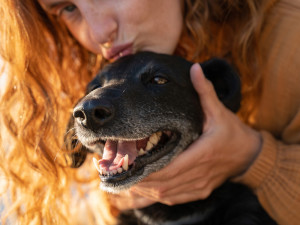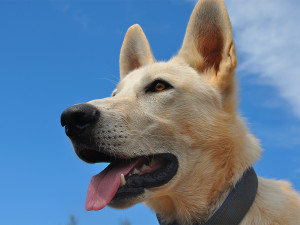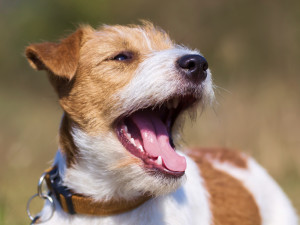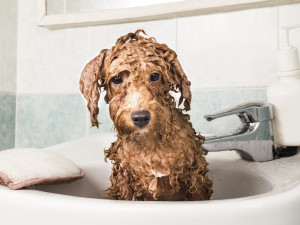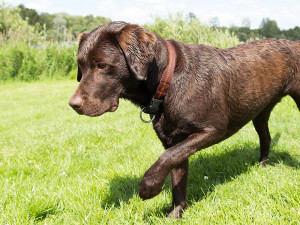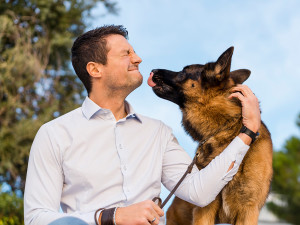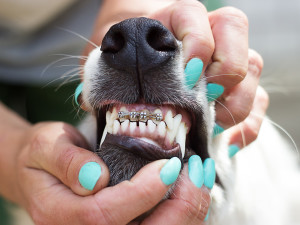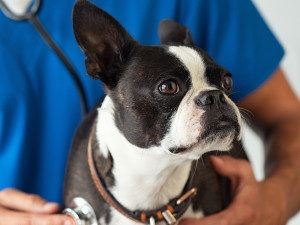80% of Dogs Have a Dental Disease — Does Yours?
Here are four common dental problems your pup might face and how to treat them.
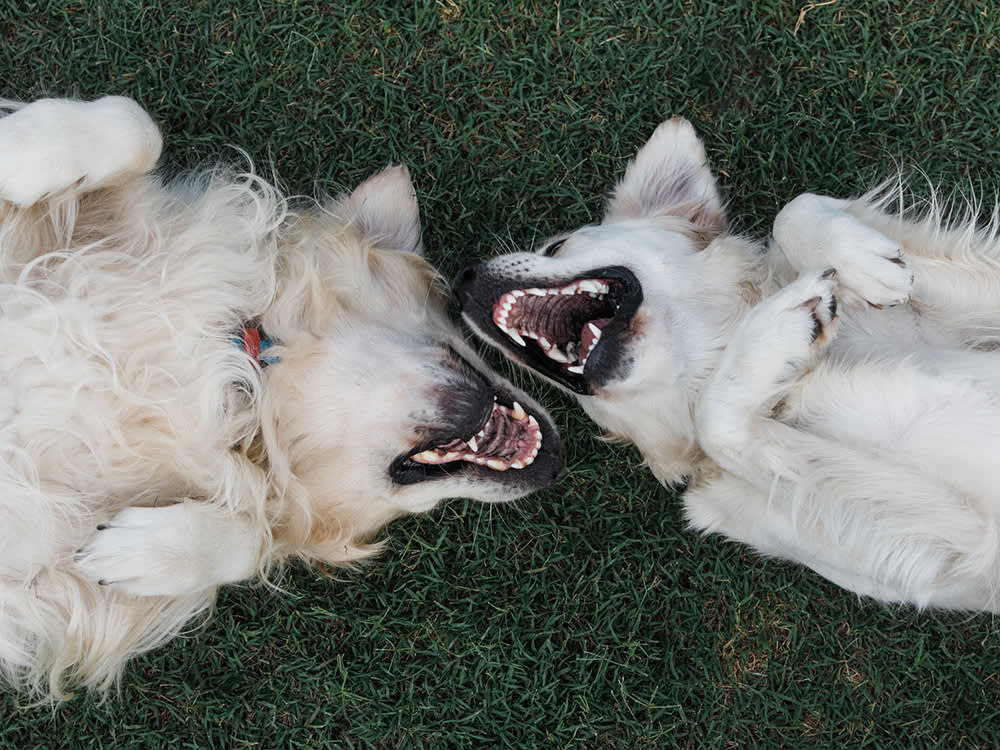
share article
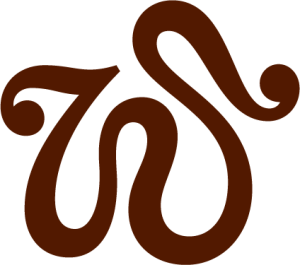
Your pet wants you to read our newsletter. (Then give them a treat.)
Here’s a question: Do you know where your dog’s toothbrushopens in a new tab is? If not, put one on your list of things to pick up the next time you’re out, along with a tube of made-for-dogs toothpaste (human brands can upset a dog’s stomach, among other things) or even just baking sodaopens in a new tab.
According to the American Veterinary Dental Society, roughly 80 percent of all dogs over the age of three have some degree of dental disease. That’s a lot of pups suffering from preventable pain. Left unchecked, oral bacteria can enter your dog’s bloodstream and cause damage to their heart, liver, kidneys, and lungs. Below, learn about some of the most common dental problems in dogs and how you can help prevent and treat them.
Dental Diseases in Dogs
Periodontal Disease
Periodontal disease, the most common disease occurring in dogs and catsopens in a new tab, is defined as plaque-induced inflammatory pathology of any part of the tissues that hold the tooth in the mouth. Dogs’ teeth are covered in bacteria-rich plaque, which, when combined with minerals in the saliva, hardens into tartar (or calculus) that traps even more bacteria. Left unattended, your dog’s gums can become inflamed, resulting in gingivitis and, ultimately, periodontal disease.
Plaque
Plaque is a soft biofilm that contains bacteria and toxins. Plaque accumulates on the surface of dog teeth within hours after dental cleaning; if it mineralizes, tartar (calculus) forms.
Gingivitis
Gingivitis in dogsopens in a new tab is the reversible form of periodontal disease, affecting only gingiva (the gums). As inflammation continues, the gum detaches from the dog’s tooth, creating a pocket. Toxins from plaque bacteria and enzymes from inflammatory cells cause further destruction of periodontal tissues.
Periodontitis
Periodontitis is the more severe form of periodontal disease in dogs. It results in attachment loss, gingival recession, and loss of alveolar bone, which loosen the tooth and puts it at risk of falling out. In dogs with multi-rooted teeth, the furcation between two roots becomes exposed. Bacteria, toxins, and inflammatory mediators may also be released into the bloodstream, allowing them to travel throughout the body and cause harm to important organ systems.
Dental Diseases and Small Breed Dogs
No matter how big or small your dog is, they have 42 teeth. If they’re one of the toy or short-nosed breeds, those teeth are likely to be crowded, which means greater potential for developing dental problemsopens in a new tab.
Dental Treatment Options
Your dog should generally have an annual oral examination performed by a veterinary health care professional. The amount of dental deposits (plaque and tartar) and the condition of the gingiva (color, texture, and shape) will dictate the need for placing your pet under anesthesia to have dental scaling and periodontal therapy performed.
Although anesthesia will never be 100 percent risk-free, modern anesthetic and patient-evaluation techniques minimize the risks, and millions of dentistry and oral surgery procedures are safely performed each year.
Anesthesia-free dental cleaning is also an option, though it too is best performed in the vet’s office; it has its advantages, but it’s not for all dogs, and ultimately, it doesn’t result in as good cleaning as one performed under anesthesia — and there is much more oral discomfort and serious pain.
Preventing Dental Diseases in Dogs
Daily brushing is one of the easiest things you can do to protect your dog’s overall health. Most plaque buildup occurs on the cheek side of your dog’s teeth, so when brushing, concentrate your efforts there. Granted, few dogs will step up to the bathroom sink and let you give their teeth a good scrubbing, but patience and a few positive-reinforcement techniques opens in a new tabwhile brushing can help your dog be more cooperative.
Use oral hygiene aids.
While an effective home oral hygiene program consists of daily tooth brushing, you can also use other oral health care products (for example, rinses/gels, chew toys, dental treats) to get a little more help.
Brush with toothpaste or baking soda.
When oral hygiene is less than optimal, plaque can mineralize within two to three days, forming tartar that resists being easily brushed off. All you need is a soft-bristled and appropriately sized toothbrush, veterinary toothpaste (or baking soda), some patience, and one minute each day.
Toys can help, too.
Certain toys and treats can be used in combination with daily tooth brushing, oral health care products, yearly dental check-ups, and dental cleaning and periodontal therapy. Toys and treats should not be too hard. Very hard materials can fracture teeth; rocks and large ice cubes should also be avoided. Tennis balls are popular toys for many dogs; however, they are very abrasive and will rapidly wear down the teeth.
Bones can work with supervision.
When used with supervision, raw bones, special chews, dental bones and toys, and other healthy products that work by scraping off plaque (but not tartar) can also help, although they shouldn’t be relied upon to do the whole job.
When all else fails, your vet can help.
When your dog goes in for their annual examination, your vet will check out their teeth and gums and may recommend a thorough cleaning, which requires anesthesia.
When all is said and done, the few seconds a day it takes to whisk a brush across your dog’s pearly whites will pay off in better health — not to mention kisses that make you smile — instead of quietly gag.
Alexander M. Reiter, DVM, DAVDC, DEVDC
Alexander M. Reiter is Chief of Dentistry and Oral Surgery Service at the University of Pennsylvania School of Veterinary Medicine. He also is a Founding Fellow, AVDC Oral and Maxillofacial Surgery (OMFS).
Related articles
![Brown Labrador lifting front leg]() opens in a new tab
opens in a new tabHow to Get a Head Start on Your Pet’s Health
Spot lumps, limps, and lethargy early on.
![A man with his eyes closed while a dog attempts to lick his face for a kiss.]() opens in a new tab
opens in a new tabHere’s Why Your Dog’s Breath Is the Worst
It might be a sign of a bigger issue.
![A person holding a dogs mouth open showing its braces.]() opens in a new tab
opens in a new tabWhy Dog Orthodontics Exist and Your Pup May Need Them
Braces are actually the most gentle way of dealing with your dog’s malocclusion (aka a “bad bite”).
![Brown Labrador lifting front leg]() opens in a new tab
opens in a new tabHow to Get a Head Start on Your Pet’s Health
Spot lumps, limps, and lethargy early on.
![French bulldog being examined at the vet via stethoscope]() opens in a new tab
opens in a new tab9 Tips For Saving Money At the Vet
Ways to lower your bill — without compromising your pet’s health.
![dog leaning on laptop while man types]() opens in a new tab
opens in a new tabFor the Record, How to File Your Dog’s Papers
Don’t trust your dog’s important info to your foggy memory.
